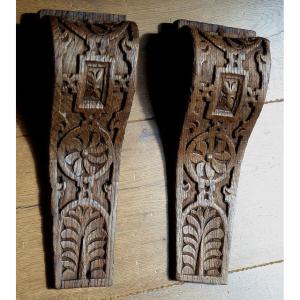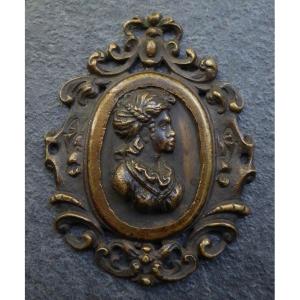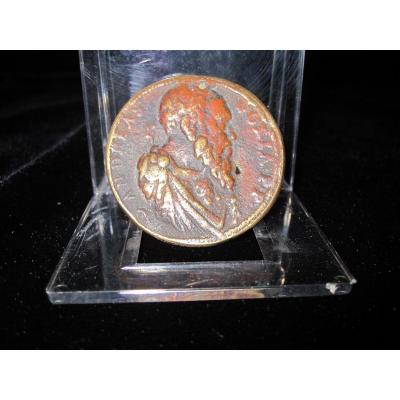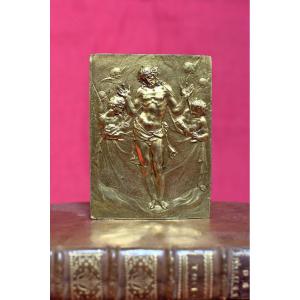Large bronze plaquette representing the sacrifice of Isaac after an intaglio on rock crystal by Annibale Fontana (1540-1587).
Italy, early cast from the late 16th or early 17th century.
Dimensions: 17.1 x 12.3 cm.
Beautiful cast quality and beautiful nuanced brown patina.
This plaquette was cast on an original intaglio by Annibale Fontana made around 1570 in Milan and mounted, in the following years (with five others of the same dimensions, one larger and thirty smaller ones), in Augsburg on a large casket. The purchase of the plaques and the order for the casket were made by Albrecht V of Bavaria, the casket is still kept today with the treasure of the Residence in Munich. For a photo of the casket, see here: https://commons.wikimedia.org/wiki/File:2014-08-06_M%C3%BCnchen,_Residenz_028_Schatzkammer,_Kristallschrein_Herzog_Albrecht_V._(14907515967).jpg
The scene of the sacrifice of Isaac is on a small side of the casket (see last photo).
The five other large intaglios that decorate the casket were, a priori, not cast and no plaquette has come down to us reproducing them. Given the very Italian style of the preserved plaquettes after the intaglio of the Sacrifice of Isaac, it is likely that the casting was done in Fontana's workshop in Milan. The relief being much stronger on the plaquette than the hollows on the intaglios, so it is possible that the plaquette was molded on a terracotta modello made by Fontana before the creation of the intaglios and preserved by him (cf. Rossi 2011).
The plaquette is known from several examples of unequal quality preserved in museums, including one in Bologna (Museo Civico Medievale) and one at the Met (see here: https://www.metmuseum.org/art/collection/search/198305 ).
Bibliography:
Regarding the large crystal casket (Kristallschrein), read the catalog of the treasure of the Residence put online by the institution itself. The very complete notice is described under number 321: https://www.residenz-muenchen.de/deutsch/service/Raumbuch_Schatzkammer.pdf
Regarding the plaquette and its history, read: Francesco Rossi, La Collezione Mario Scaglia, Placchette, Bergamo 2011, vol. 1, pp. 386-387.
















































 Le Magazine de PROANTIC
Le Magazine de PROANTIC TRÉSORS Magazine
TRÉSORS Magazine Rivista Artiquariato
Rivista Artiquariato